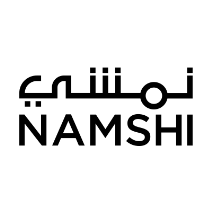Everybody’s talking about how ecommerce in the Gulf Cooperation Council (GCC) countries is still at a nascent stage.
If you consider smartphone penetration in the region (over 65%), internet penetration (overall more than 90%), and compare it with the share of ecommerce in the GDP (0.4%), indeed there is immense growth potential.
The GCC countries comprise Saudi Arabia, the UAE, Kuwait, Bahrain, Qatar and Oman—namely countries where the disposable income is high. So why aren’t consumers shopping more? There are some solid reasons for this:
Not enough variety: Only 34% of the region’s major retailers have online presence. Among the pure play ecommerce players, few have succeeded in the many hurdles the region throws up, which are listed below.
Logistics and delivery: The Middle East is notorious for its inadequate address systems, making last-mile delivery difficult for ecommerce businesses. Only players with deep pockets have been able to invest heavily in infrastructure that ensures reasonable reliability in delivery.
Payments: A particularly stiff bugbear, the problem with payments starts with a large unbanked population. Even among those who have access to online payments, there is a distrust of revealing such information on the internet, making it necessary to provide cash on delivery payment option.
Policies: Being a relatively new development in the region, governments still don’t have clear policies framed for ecommerce. Good policies could facilitate business operations, and these are still evolving.
In spite of the multitude of problems, ecommerce development has taken off and some prominent ecommerce business have emerged in the GCC countries..
We list 4 successful ecommerce websites of the GCC region. Read on to get inspired by their stories of how they’ve overcome the hurdles of doing business in what is a very promising ecommerce market for the early starters.
1) Souq.com
Souq started as an auction site in 2005, and realigned itself as an online marketplace and retail company only in 2011.
It has grown with such rapidity that it has earned itself the name of the ‘Amazon of the Middle East.’
There’s a good reason why Souq’s success in the region is unparalleled—it has surged forth with unmatched aggression to solve the problems of its target market.
– For a region that prefers going online on the mobile, Souq had a streamlined mobile shopping strategy.
– Souq owns Payfort, a payment gateway that encourages merchants to sell on the ecommerce website with secure technology.
– To offer great service and deal with the logistics problems of the Middle East, Souq has recently launched its ‘Fulfilled by Souq’ ecommerce services for warehousing and delivery.
2) Namshi.com
Only 4 years old, Namshi is the region’s biggest fashion and lifestyle pure play. Being local (Arabic), Namshi understands the consumers of the region and reaches out to them accordingly.
-The people of the region are known for their penchant for high-fashion, so Namshi stays up to date in its offerings. From international high street brands to celebrity labels like Beyonce’s Ivy Park, Namshi includes it all.
-The people’s love for visiting the mall is well known in the region, as is their open distrust of online shopping. To encourage these buyers to consider online shopping, Namshi offers cash on delivery and a 14-day return period.
-To combat a largely prevalent fear of fakes among buyers, Namshi is persistent in its content and digital marketing, and brand awareness efforts.
3) MarkaVIP.com
Amman, Jordan, based MarkaVIP is an invitation-only luxury fashion and lifestyle shopping destination. It launched in 2010, and already boasts over 3 million exclusive memberships from over 8 Arabic-speaking countries. MarkaVIP holds flash sales periodically, selling premium brands at discounted prices.
– MarkaVIP recognized the demand for high fashion and labels in the region, and focused on this niche, keeping it’s exclusivity by staying membership-only and holding flash sales that create a sense of urgency.
– It has made itself synonymous with luxury, so that some brands have launched on the website as the first point of sale in the region.
– To offer customer convenience, MarkaVIP has set up distribution hubs in each of its local markets.
4) Mumzworld.com
Among the ecommerce companies receiving funding on the basis of its exponential growth and promising future is this ecommerce marketplace catering to the needs of mothers, babies and children.
Mumzworld was introduced in 2011 and measures its success by the high loyalty it enjoys—over 45% shoppers return to make purchases at least 5 or 6 times in a year.
– Mumzworld identified a gap in the offline market—a one-stop shop for all the needs of mothers that offers world-class products and brands.
– The marketplace cum retail website gives shoppers a compelling reason to visit: an SKU count higher than any offline store in the sector in the region.
– To ensure lasting success, it’s necessary to go the extra mile and cater to the consumers’ convenience. Mumzworld offers features such as bespoke products and a customized gift registry for its customers.
Each of these websites has identified its strengths and leveraged them, and has targeted the specific hurdles that hurt its business to overcome them. In the process, they have opened up the scope of the promising Middle East ecommerce market.









